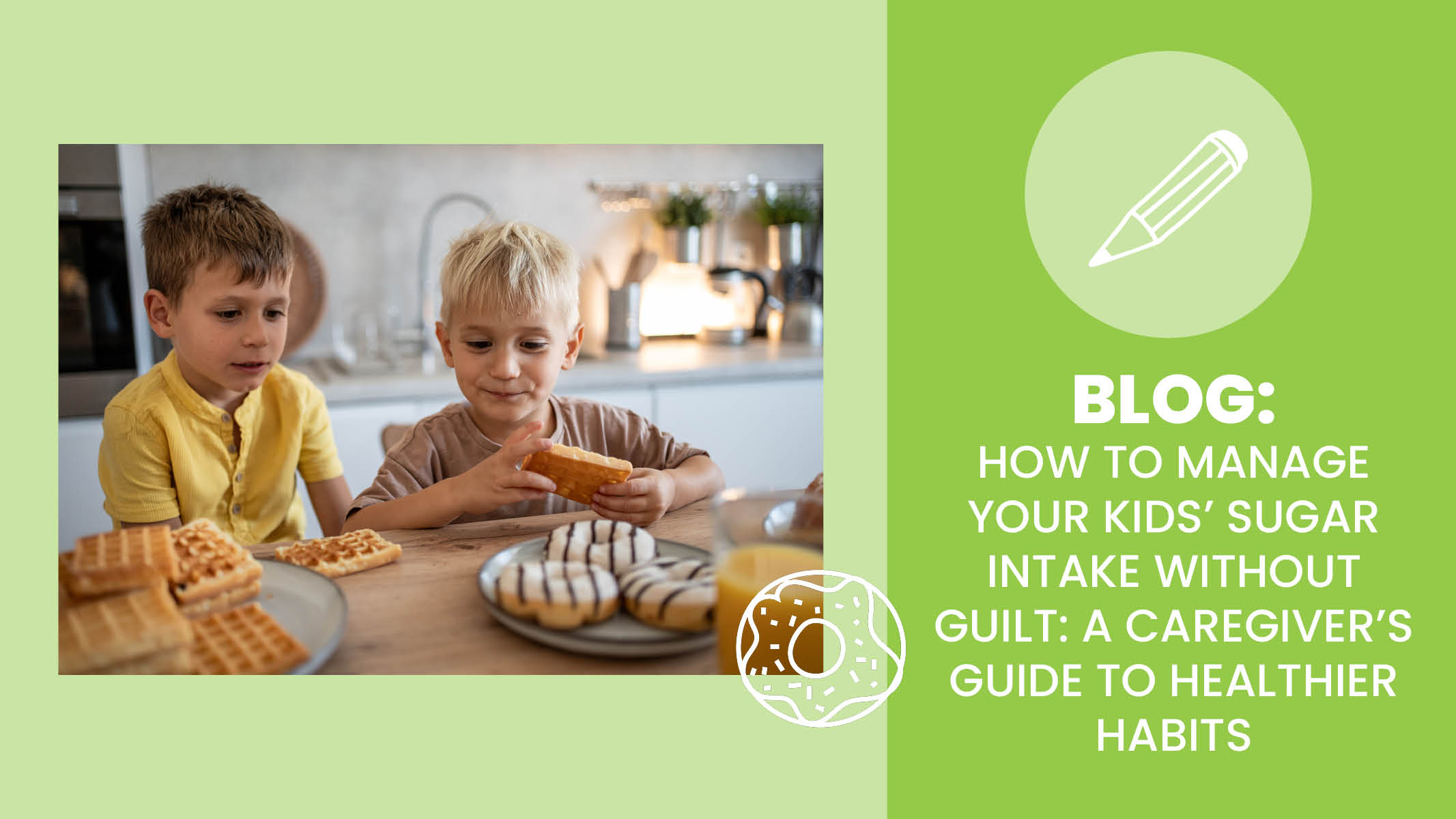If you have ever found yourself worrying about how much sugar your child is eating, you are not alone. From birthday parties to after-school snacks, sugar seems to be everywhere. The good news? You do not have to ban sweets altogether to support your child’s health. With a few simple strategies, caregivers can manage their kids’ sugar intake, build better eating habits, and still enjoy the occasional treat – guilt-free.
To help us understand this important topic, we spoke with Taylor Nixt, a Registered Dietitian at Sanford Health, who shared expert insights on sugar’s effects on kids, how much is too much, and what you can do to create a healthy balance at home.
Why Is It Important to Limit Sugar in Kids’ Diets?
Managing sugar intake early in life is crucial. "The habits children develop during their early years often carry into adulthood, so building a foundation of healthy eating early on is important,” says Taylor. “Highly processed foods like soda, candy, baked goods, and sugary cereals are packed with empty calories and added sugars but offer little nutritional value. These foods are not filling, which can lead to frequent snacking, difficulty concentrating in school, low motivation for physical activity, and an overall lack of energy,” she adds. Over time, excess sugar intake may contribute to mood swings, energy crashes, and problems with focus and behavior. “In the long term, high intake of added sugars is associated with increased risk of obesity, type 2 diabetes, tooth decay, and liver and cardiovascular issues,” highlights Taylor.
Luckily, caregivers have a lot of power in shaping their kids’ eating habits. "Meals that include protein, whole grains, fruits, vegetables, and healthy fats help keep kids full longer and reduce the urge to snack on processed foods," says Taylor. Caregivers could also teach their kids how to spot added sugars on ingredient labels and choose products with more natural sources of sweetness, like fruit. To help you get started, take a look at our Reading Nutrition Labels Poster Pack – a handy guide to understanding food labels and making smarter choices at the store.
How Much Sugar Is Too Much for Kids?
The American Heart Association recommends that:
- Children under 2 years should avoid added sugars entirely.
- Children aged 2 to 18 should limit added sugar to 25 grams (6 teaspoons) per day.
- Sugary drinks should be limited to no more than 8 ounces per week.
Even if your child is very active, these sugar guidelines do not change. As Taylor explains, "A child that is more active would require more calories, but these calories should come from nutrient-dense foods that contain protein, complex carbs and fats." Sugar shows up in more foods than you might think – but how well do you really know it? Take our sugar knowledge quiz to see how much you know about sugar, nutrition labels, and making healthier choices every day.
Common Hidden Sources of Sugar in Kids’ Foods
You might be surprised by how many everyday foods contain hidden sugars. “Many quick and convenient breakfast and snack options like cereals, instant oatmeal, granola bars, flavored yogurts, peanut butter, breads, and even applesauce cups often contain hidden added sugars,” Taylor points out.
To manage this, caregivers should learn how to read nutrition labels and ingredient lists. Look for labels that say, "no added sugar," "packed in light syrup," or "100% fruit juice." And when in doubt, go for whole, unprocessed foods or prepare snacks at home where you can control the ingredients.
Balancing Treats and Healthy Eating – Without the Guilt
Yes, your child can still have that birthday cupcake or holiday cookie! In fact, restricting sugar too harshly can backfire. “Rather than restricting sweets altogether, caregivers can normalize occasional treats without making them feel like a reward or something 'off limits'," says Taylor. This can prevent kids from developing unhealthy relationships with food.
“A helpful guideline is the 80/20 rule. This rule focuses on aiming for 80% nourishing foods like fruits, vegetables, whole grains, proteins, and healthy fats, while allowing for about 20% fun foods (like the occasional sweet treat) in the child’s diet,”
Caregivers can also offer healthier alternatives like fruit, yogurt with berries, or smoothies to satisfy sweet cravings while still providing nutrients. Taylor adds, "Teaching kids to enjoy healthier options while still allowing for treats supports balance rather than feelings of guilt."
Looking for treats that are delicious but still have ingredients that add nutritious value? Check out our fit twist on guilt-free sweet treats for kids.
Healthier Alternatives to Sugary Snacks
Looking for snack options that are both fun and nutritious? Try:
- Smoothies made with frozen fruit, greek yogurt, and milk
- Apple slices with peanut butter
- Greek yogurt parfaits with berries
- Air-popped popcorn
- Homemade trail mix
- Frozen yogurt bark
- Chia pudding
- Oat bites
- Cookie dough hummus
"The key to a balanced snack is pairing a source of protein with a complex carbohydrate," Taylor advises. "This combination helps keep kids full, energized, and focused until their next meal."
Managing Sugar Intake in Social Settings
Managing sugar intake during social events like birthday parties, holidays, or playdates becomes much easier with a little planning. With a little preparation, caregivers can guide kids through sugar-filled occasions without stress. Here are Taylor’s top tips:
- Set expectations with your child before the event.
- Offer a nutritious snack beforehand to avoid overeating sweets.
- Encourage kids to choose 1–2 treats they really enjoy.
- Lead by example – make mindful choices yourself.
- Bring a healthier snack or dessert to share if you’re attending. Remind everyone to focus on the fun and social aspects of the event rather than just the food.
- Caregivers hosting the party can also consider serving smaller, sample-sized portions of sweets, allowing kids to try a variety without overdoing it.
- Water or milk could be encouraged instead of sugary drinks.
Taylor reassures, “These events are infrequent, and consistency over time is what truly matters – one celebration will not derail your child’s healthy habits.”
Managing your child’s sugar intake does not mean cutting out treats entirely – it is about finding a healthy, balanced approach to food. By prioritizing whole foods, setting a positive example, and allowing room for occasional indulgences, you help your child understand that healthy eating is about nourishment, not restriction. With the right tools, a bit of planning, and a flexible mindset, you can confidently support your child’s well-being – without guilt, and with plenty of joy along the way.
Ready For More? You Might Also Like:
Snacks vs. Treats: What's the Difference?
How to Build a Meal: A Printable Nutrition Guide
Snack Choices for Kids


